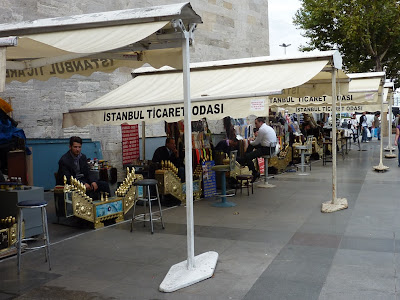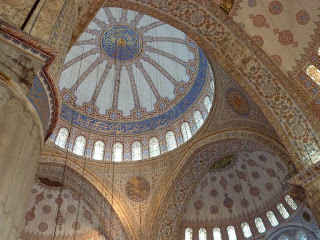 |
Shoe-shine district
|
 |
Sadly, Istanbul does not re-cycle; to compile this load,
someone had to go through a lot of trash, for plastics,
glass, aluminum, carboard, etc.
|
 |
Ablution, outside the New Mosque
|
 |
Pigeon district
|
 |
In the Spice Market; not nearly as large as
the Grand Bazaar, nor as varied; but no less
interesting; especially if you like food...
|
 |
Spices; I think we saw more at Tangier, but it was still
impressive
|
 |
Outside it's no less interesting
|
 |
This is the Kurukahveci Mehmet Efendi coffee place; the
wonderful coffee aroma hit me half a block away; and then
I saw a line of people waiting to buy their sacks of
Turkish coffee
|
 |
This patisserie, however, was our undoing
|
 |
Especially these puppies, honey-soaked doughnut holes;
but also the baklava, etc. |
 |
Somehow, we managed to soldier on, through the
olive/pickle/grape leaf shops, and on to our next destination
|
















































